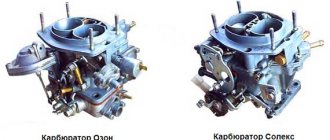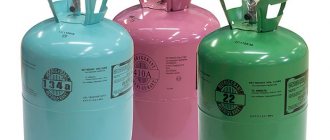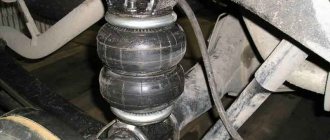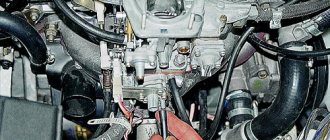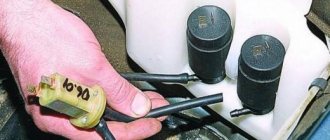Many Internet sources cover the issues of car tuning and engine tuning in particular. For these purposes, entire sets of accessories and tuning spare parts are offered. But, strangely, almost all tuning efforts are for some reason aimed at increasing engine power. But such an important indicator as the amount of torque and its value at different ranges of engine operation is simply kept silent. Although this is extremely wrong. For example, reducing the power of a VAZ 2109 engine by 10 hp will only lead to a drop in maximum speed by about 6 km/h. This indicator will not have much impact on cravings. After all, it is the torque that allows the car to rapidly develop speed from a standstill and while moving, without dips or jerks. And in order for the engine to become obedient in this regard, serious tuners use special camshafts, including those of a sporting nature. Since it is the camshaft that is the mechanical “brain” of the engine and is responsible for the nature of its operation.
Sports camshaft - adds power and reliability
Torque and its effect on engine performance
In order to understand why a car needs a sports camshaft, we should consider the problem of torque from a technical perspective. Probably, more than once, owners of the domestic automobile industry felt that the engine became more or less responsive only after the 3000 rpm mark. Before this indicator, any attempt to squeeze fast acceleration out of the engine leads to failures in operation and jerking of the car. Which ultimately leads to clutch failure. And in fifth gear, until you accelerate the car to an acceptable speed, it refuses to go at all. This is due to the fact that at low and medium speeds the torque value is very low, this significantly reduces the torque of the engine, regardless of its power. The best option is an engine in which, both in the low, medium, and high ranges, the torque indicator is stable and as close as possible to the peak. But, unfortunately, such an ideal option has not yet been created. Although, thanks to tuning, you can get a little closer to ideal.
Relationship between engine speed and torque
What camshaft will we install?
It's not even a question. This is most likely a statement of the fact that installing a sports camshaft is a resolved issue.
Why install a sports camshaft? People's experience is better than any advertising.
What does installing and tuning a sports camshaft give to a standard engine? Engine response and power. The classics, such as the VAZ engine, have a significant, in the opinion of “hot” drivers, disadvantage.
At low speeds (up to 3000 rpm), the engine does not “pull”. This is expressed in dips when pressing the gas pedal at the beginning of movement, jerking when moving sharply, etc.
A solution, of course, was found. This is the installation and adjustment of a sports-type camshaft on classic engines. Fortunately, there are enough companies that produce tuning sports camshafts today.
And here is a sports camshaft
Why do we need a camshaft, and even a sports type? It turns out that everything is very simple and logical. After all, the graphical indicator of torque (curve) directly depends on the gas distribution parameters. They are also called “valve timing”. Which imply the time and amount of opening of the valves in the engine. And as you know, from the engine design, these values depend on the profile of the camshaft cams and their angle of rotation. In this regard, most production cars have a certain average valve timing. Since the common man needs that in lower gears the car can move off confidently, and when driving at medium and high speeds, fuel consumption and engine response are effective.
The camshaft affects the entire operation of the engine
Those who do not see themselves outside of a high-speed and dynamic car simply need to replace the standard camshaft with another tuned one. They are often called sports.
Differences between the sports camshaft and the production model
The difference between a sports camshaft and a regular production camshaft is the modified cam geometry. They have a higher and wider shape, which leads to the valve being raised to a greater height and for a longer opening period. This allows you to supply a full portion of the fuel-air mixture to the cylinders. In addition, due to the smooth or, on the contrary, sharp cam shapes, the sports camshaft is characterized by stable valve operation in a given engine operating range.
Selecting a sports camshaft
As a rule, most sports camshafts are installed with a so-called split gear. With its help, you can more accurately configure and adjust the valve timing. This allows you to achieve maximum power and torque within a given range of engine operation.
Installing sports camshafts of a certain configuration allows you to adjust the engine in such a way that the detonation limit under load moves to the maximum level. That is, even at low speeds the fingers stop knocking. This significantly increases the service life of the motor. Or you can choose a camshaft that will allow you to feel the full power of the engine to the fullest on the highway.
A sports camshaft will significantly increase engine power
In addition, installing a sports camshaft makes it easier to adjust the gaps by increasing the cam run-off areas on the valve closing side. This also leads to a reduction in the number of clearance adjustments over a certain period of time. That is, using a conventional camshaft would require up to 4 valve clearance adjustments with a vehicle mileage of 60 thousand km. Using a sports camshaft during the same period will require only one adjustment of the clearances. And this is not only an increased resource, but also saved time and money.
Installing a sports camshaft on a VAZ
So, once you have purchased this part, you need to find out exactly how it is installed. It is worth noting that to simplify the procedure for adjusting the FGR, it is necessary to use such a part as a split camshaft gear. This device will help you fine-tune the valve timing without interfering with belt tension.
First you need to remove the old camshaft.
- To do this, you need to park the car in the garage, open the hood and disconnect the negative terminal of the battery. Then, unscrew the three bolts securing the timing belt casing and remove it. Set the first cylinder to top dead center using a 19 key. Rotate the crankshaft until the corresponding marks on the crankshaft pulley and the camshaft gear coincide. This is necessary in order to simplify the replacement of the camshaft in the future. Be sure to remove the crankcase ventilation hose to make removing the valve cover easier. To do this, loosen the clamp securing it to the air filter and pull it out from the thick fitting.
- Now loosen the tension pulley and remove the timing belt so that it is not in the way. Next, unscrew the air filter housing and carburetor from the exhaust manifold. First disconnect all related cables and throttle control actuators. After all this, you need to remove the valve cover. To do this, unscrew the two fastening nuts and pull it up.
- We remove the old camshaft. Many drivers are afraid of this procedure because they have never done this before. In fact, there is nothing difficult about this and any car enthusiast can handle it. To do this, you first need to secure it tightly. To do this, you need to jam its gear using a screwdriver or any other device. Thus holding it from turning, unscrew the fastening bolt from the camshaft gear side. After this, first remove the camshaft gear, and then pull out the shaft itself.
The next step is to install the sports camshaft.
- To do this, it is worth preparing the appropriate gear (split) in advance. Immediately check for the presence of a key at the end of the shaft, otherwise installation of the gear will be impossible. Insert the camshaft into its seat in the same way as the removal process and install the gear. Align the mark on the gear with the mark on the cylinder head housing in advance. The camshaft lobes must be aligned with the valve position. Next, the camshaft mounting bolt is tightened.
- Put on the timing belt and adjust the valve clearances above each cylinder (for the intake valve - 0.2 millimeters, and for the exhaust valve - 0.35 millimeters) . The fact is that with the use of a new camshaft, the thermal clearances also change, so they need to be adjusted again. Once the clearance adjustment is completed, adjust the valve timing using the split gear. This is done in order to achieve minimal power losses.
This is how the sports camshaft is installed on a VAZ 2108. As you can see, this is not a complicated procedure at all and is performed in a regular garage with the appropriate tools. To do this, it is not at all necessary to contact the service station technicians and pay for the replacement and adjustment of the camshaft.
Classification of sports and tuned camshafts
Naturally, different sports camshafts are used for different cars. However, they are all divided into several classes. This classification primarily indicates the operating range of the engine at which the shaft provides maximum efficiency.
Grassroots
This is how low-level camshafts are distinguished. This type of shaft provides a small amount of valve lift, but there is no valve overlap zone (when the intake and exhaust valves are slightly open at the same time). In this case, the working mixture from the combustion chamber is prevented from getting back into the intake tract. However, low lift height causes insufficient mixture to enter at high speeds, which reduces maximum power. In this regard, this class of camshafts is used for urban vehicles - city cars.
The advantage of low-speed camshafts is high torque at low speeds. This allows you to accelerate sharply from a standstill (at traffic lights, intersections). In the middle range, such camshafts behave similarly to serial ones, but in the high range they are even inferior to them.
Universal
This class of camshafts is also called “highway-city”. They are not too different in performance from the serial ones, and have high performance precisely at medium engine speeds.
Overhead camshafts
The so-called “high” class camshafts have a wide valve overlap area and have wide phases. This helps fill the engine with mixture at the top, due to an increase in the flow area in the valve areas and due to an effect such as inertial charging. The latter phenomenon is the drawing of the air-fuel mixture into the combustion chamber due to the release of combustion products into the exhaust manifold. It looks like a vacuum suction effect. In this case, the engine receives a noticeable increase in power, and torque has a maximum value in the high speed zone. However, at lower levels this leads to failures in engine operation due to the fact that part of the mixture is pushed back into the intake manifold. Moreover, the higher the maximum torque value in relation to engine speed, the stronger the negative effect at the bottom. It is the riding camshafts that are further divided into two subtypes: riding tuning and riding sports. They differ from each other only in phase characteristics.
Horse racing camshafts
Horse racing camshafts are absolutely not designed for driving in urban conditions. They have a significant dip at low engine operating ranges, and maximum output only at extreme operating conditions.
What and why are there camshafts?
And there would never be a conversation about how to choose a camshaft if all drivers were limited to what they had on the car from the assembly line - a standard engine with standard power ratings.
But, after all, drivers are people too, which means that each of us has our own character, and wants to drive a car in accordance with the main traits of our character. Someone calmly and without unnecessary fuss on the road. And give someone a drive, a sharp move forward at a traffic light, the wind in their face on the highway.
Actually, this is where the need for engine tuning arises, one of the main factors of which is replacing the standard camshaft with a sports camshaft. And very often “hot” guys ask the question of how to choose a camshaft from the mass of offers on today’s market of spare parts for car repair and tuning.
And if imported cars have quite powerful engines, then in the vastness of our country they are most often looking for a sports camshaft for the classics. Sometimes even not for special drive, but to improve engine performance.
After all, replacing a camshaft essentially shapes the nature of your engine’s operation, determining the lift speed and duration of valve opening.
Typically, the camshaft is located at the top of the cylinder head. It is today. Previously, engines used the so-called bottom camshaft. The number of camshafts depends on the number of engine cylinders and the number of engine cylinders.
Why is there such a demand for a sport camshaft? The answer is simple. They provide the most optimal supply of air-fuel mixture charge to the cylinders by increasing the valve lift height.
The smoothness of the cam profile of the camshaft tuning ensures the most reliable operation of the timing belt. In addition, the sports camshaft has a characteristic feature - it increases the detonation limit. That is, this is a movement without the characteristic “knock of fingers”, so familiar to drivers of classic domestic car models.
Camshaft selection options
How to choose a sports camshaft for your car. To do this, remember that depending on the profile of the camshaft cams, the height of the valve lift and the time it is open are adjusted. Therefore, even by appearance it is possible to distinguish a top camshaft from a bottom camshaft. The higher one has narrower and sharper cams, due to which the valve can open for a longer time to values equal to 13.2 mm. By the way, such large valve opening values lead to the fact that special recesses have to be cut in the pistons, which prevent collisions of pistons and valves at TDC, while the lower camshaft has softer and smoother cam shapes. This allows him to open the valve a small amount and for a short time.
Camshafts are selected according to certain parameters
Let's start with the intake.
The most obvious relationship is the connection between the duration of opening of the intake valve and the filling of the cylinder with the working mixture. As the intake duration increases, more working mixture enters the cylinder, but this has limits. Since the intake phase exceeds 180 degrees, the intake valve will open slightly earlier than the piston passes TDC and close slightly later than BDC. Increasing the intake phase will lead to an increase in these advances/lags.
Track BMW M5 - an advantage of 20 seconds
When the piston passes BDC, a small vacuum still remains in the cylinder, which continues to draw in the working mixture, so some delay in closing the intake valve is justified, but later the piston begins the process of actively compressing the working mixture and, if the valve has not yet closed, pushes part of the mixture back. If the valve opening is significantly advanced, some of the exhaust gases pushed out of the cylinder by the piston may leak through the intake valve and deplete the incoming working mixture. This is typical for engine operation at low speeds.
What's the result?
Having examined the problem of installing a sports camshaft from several angles, we can draw the following conclusions:
The choice of camshaft primarily depends on which driving mode you need more. If it's sharp acceleration dynamics at low speeds, then a low-level camshaft with a smooth cam profile is your best friend.
If speed and speed on the track are your thing, then you will need an overhead camshaft with its sharper cams.
